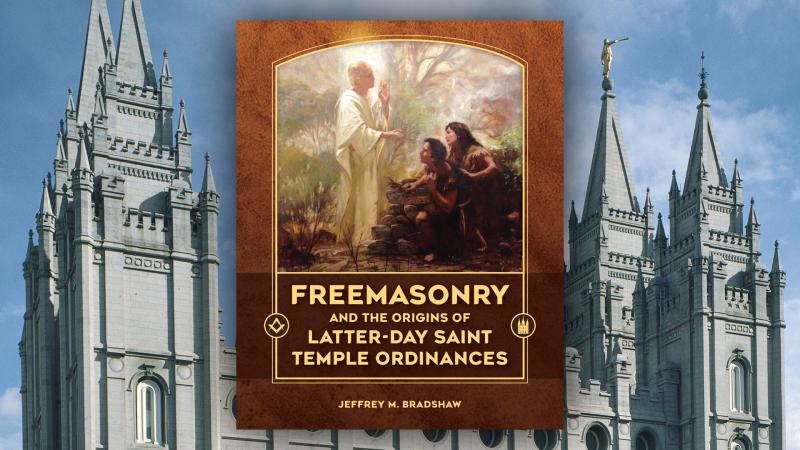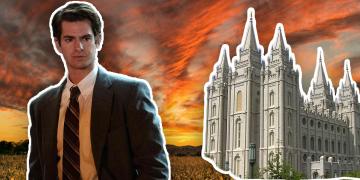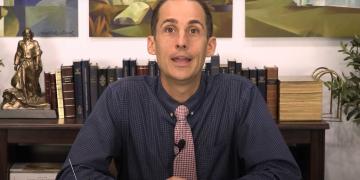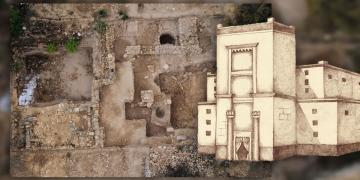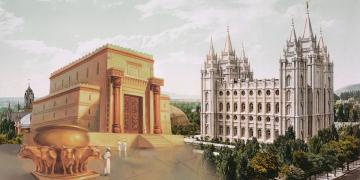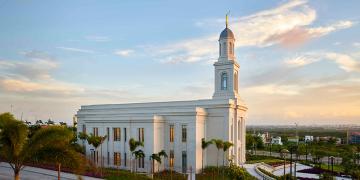You are here
Book Review: Freemasonry and the Origins of Latter-day Saint Temple Ordinances
In March 1842, the Prophet Joseph Smith was inducted to a fraternal order known as Freemasons. Less than two months later, on 4 May 1842, Joseph Smith introduced the temple endowment to a select group of Latter-day Saints. Because of the close timing of these two events, and some perceived similarities in the ritual manner of both the temple Endowment and Masonic practices, many have wondered what relationship, if any, is found between the two.
In Jeffrey M. Bradshaw’s latest book, Freemasonry and the Origins of Latter-day Saint Temple Ordinances, readers can gain answers to these questions. Bradshaw ‘s thesis is that “a detailed understanding of the covenants and sequences of blessings associated with temple worship was revealed to Joseph Smith more than a decade before he began to teach them in plainness to the Saints in Nauvoo.” (p. 2), maintaining that, although some similarities to Masonic rites may be found, the temple ordinances have strong biblical roots and were revealed to Joseph Smith throughout his prophetic career.
Bradshaw’s book is divided into three parts: (1) Overview of Freemasonry, consisting of chapters 1–2; (2) The Restoration of Temple Ordinances, consisting of chapters 3–4; and (3) Comparing Rites, constituting chapters 5–15. Part 1 provides a helpful and brief introduction to Freemasonry and its place in the history of the Church to help situate readers into the necessary historical context to properly understand the facets of the following discussion.
Part 2’s discussion regarding the restoration of temple ordinances is more substantive, and likewise critical to understanding how the temple ordinances may have been affected by Joseph Smith’s later exposure to Freemasonry. Bradshaw states that “temple ordinances came to the Prophet through a combination of active study, unswerving faith, and confirming revelation” (p. 4), and shows how this was done through a lengthy discussion in chapter 3. Specifically, Bradshaw points to evidence from “the Joseph Smith translation of the Bible, the oath and covenant of the priesthood, and the Kirtland Temple” (p. 41). In chapter 4, Bradshaw discusses the nature of revelation and adjustments made to the temple endowment, which offers a wonderful and concise analysis of this aspect of continued revelation.
Finally, in the remainder of Bradshaw’s book, he analyzes thirty-one elements of temple worship and compares these elements to the Bible, other ancient sources, and finally Freemasonry itself. Each chapter is divided into related subtopics and ends with a conclusion highlighting the similarities and differences between the sources mentioned, offering accessible charts for readers to understand Bradshaw’s analysis.
Ultimately, Bradshaw argues that while Freemasonry may have influenced a few elements of the temple endowment as introduced by Joseph Smith, “the Nauvoo Temple ordinances seemed generally closer to the Bible and other ancient sources than Freemasonry" (p. 293). Bradshaw offers an excellent analysis of the historical sources throughout his book, and does so in an approachable manner for both scholars and non-scholars alike. For anyone interested in the study of the temple (both ancient and restored) and the development of the Temple Endowment in Nauvoo, this book will be a great place to start.
Subscribe
Get the latest updates on Book of Mormon topics and research for free


